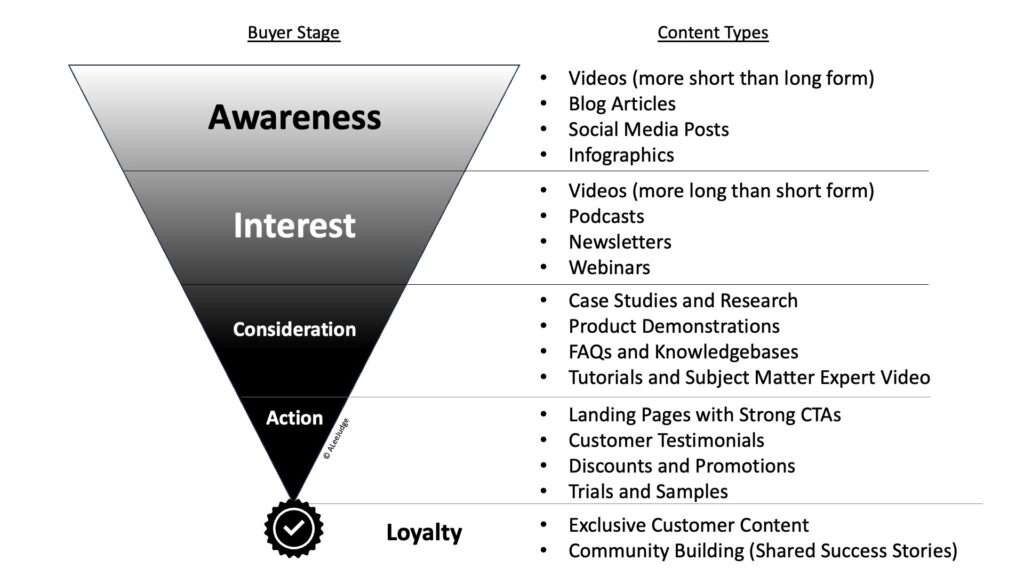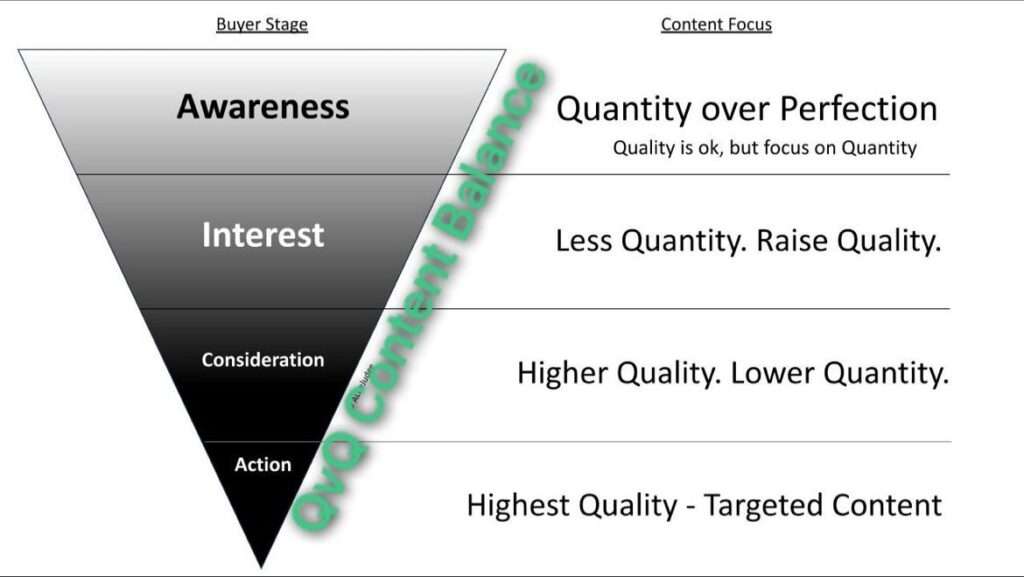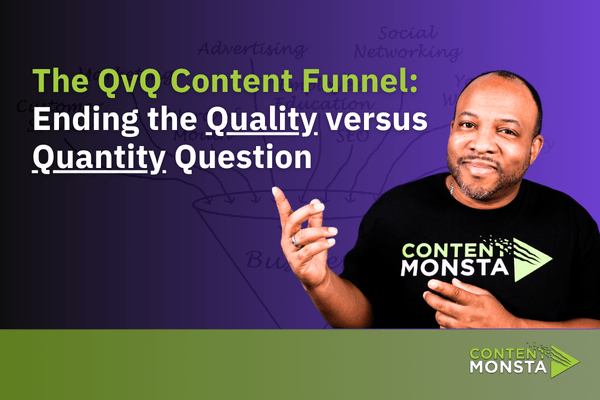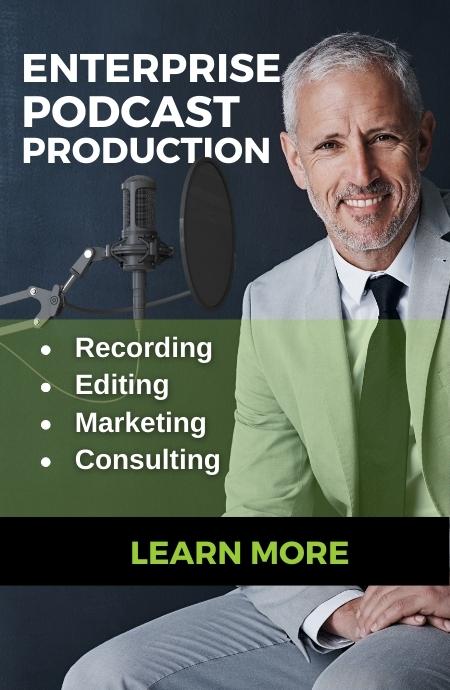Marketers often struggle to decide between focusing on quality content and increasing the quantity of content. It used to be seen as an either/or choice. Instead, I suggest a new strategy. This strategy, known as the Content QVQ Balance (Quality vs. Quantity), helps in matching the type and volume of content to different stages of the sales funnel. This falls within your overarching content marketing strategy.

1. Awareness Stage: Content Quantity Over Quality
The first stage of the QVQ content strategy focuses on creating a large volume of content to build awareness. At this stage, the primary goal is to capture the attention of a broad audience.
This means producing content that is more about quantity while maintaining a basic level of quality. It is important to note here – there are two types of quality, “production quality” and “content quality”. Here, we are referring to production quality. Content quality should be maintained at all levels, meaning that the value it brings to your customer is high, regardless of production level.
Types of Content:
- Short-form Videos: TikToks, reels, and shorts.
- Blog Articles: Quick, informative pieces.
- Social Media Posts: Frequent and engaging updates.
- Infographics: Easy-to-digest visual content.
The idea is to get your content in front of as many people as possible. For example, short snippets from podcasts or interviews can be repurposed into multiple short-form videos.
This approach maximizes the use of your content and ensures that you remain top of mind for your audience. It also allows you to maintain a competitive level of marketing touches compared to your competitors.
2. Interest Stage: Balancing Content Quantity and Quality
Once you have captured the attention of your audience, the next step is to keep them engaged by providing more substantial content. At the interest stage, you can afford to produce longer-form content as the audience has shown a willingness to spend more time with your material.Types of Content:
- Podcasts: Longer and more detailed discussions.
- Newsletters: Regular updates that provide value and insights.
- Webinars: In-depth sessions that require a time commitment from the audience.
3. Consideration Stage: Emphasizing Content Quality
At the consideration stage, potential customers are evaluating your product or service in more depth. This is where quality becomes paramount, and the content needs to provide thorough and convincing information.Types of Content:
- Case Studies: Detailed examples of how your product has helped others.
- Research Reports: In-depth analysis and data.
- Product Demos: Videos demonstrating how to use your product.
- FAQs and Tutorials: Comprehensive guides addressing common questions and issues.
4. Action: Sealing the Deal
The final stage is all about driving the audience to take action. This could be making a purchase, signing up for a service, or any other conversion goal.Types of Content:
- Landing Pages: Optimized pages with strong calls to action.
- Customer Testimonials: Videos and quotes from satisfied customers.
- Trial Offers and Demos: Opportunities for potential customers to experience your product firsthand.

The Bonus Stage: Loyalty
Beyond the action stage, there is a fifth stage focused on building loyalty among your existing customers. This involves creating content that continues to provide value and keeps your customers engaged.Types of Content:
- Exclusive Customer Content: Special tutorials, updates, and insights available only to customers.
- Community Content: Content that fosters a sense of community and belonging among your customers.
Conclusion
The QVQ Content Funnel is a strategic approach to content creation that ensures you are delivering the right type of content at each stage of the customer journey. By balancing quality and quantity appropriately, you can effectively move potential customers through the funnel, from initial awareness to final action and beyond into loyalty. This strategy maximizes your content’s impact and aligns it perfectly with your marketing and sales goals.
Why Pay for Remote Video Production
If you already have someone on your team who can edit videos, it’s fair to ask, “Why would we pay an outside agency?” In reality, remote video production doesn’t require
Remote Video Recording – Desktop Video Kit Equipment Suggestions
To dramatically improve the video and audio of your desktop video recording session, you need these four items: Camera: OBSBOT Meet 2-4K Webcam https://amzn.to/43rzwOH We recommend this webcam due to

Transmutative AI: Evolving Content Without Losing the Human Touch
Differing from general Generative AI, Transmutative AI doesn’t create content from thin air. It creates from something real – your substance, your thoughts, your experiences, your expertise.


